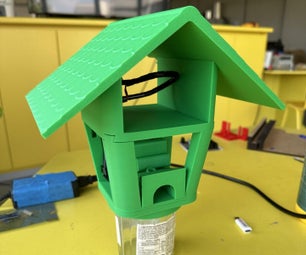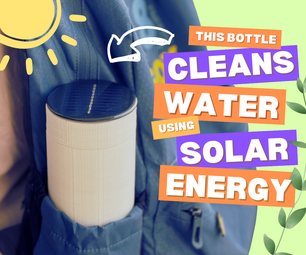Introduction: Easy and Cheap Lab Regulator for Any PSU
I was tired of looking for the correct transformer or the right pack of batteries just to try out some electronics and buying a Lab PSU costs a lot of money so instead of converting a PC ATX or a LED Switching PSU, I thought why not plug "something" in front of it which could stop any mistakes like a short-circuit, allowing a variable voltaje and setting a max current to my project.
Step 1: How It Works
One of the cool things about having this "device" separated (besides of not destroying a PSU) is that you can switch between a transformer or another power source in no time really.
Another feature is you can create more than one of this and plug them into same PSU (as long as the power of the PSU is enough for all) and you'll get different outputs to work with from same source.
Step 2: What You Need
All the links I put in this list are to send a reference to the exact ones I got but not from where I bought them (I bought everything in my local stores here in Argentina)
1 x DC Voltmeter Ammeter (this is the one I got)
1 x DC-DC buck step-down converter (this is the one I got) > any could work just make sure it has a potentiometer for voltage and another one for current at least.
2 x Knob Potentiometers (resistance of each will depend of your step-down)
2 x Banana Connectors for Chassis (example)
1 x On/Off Switch (optional)
Step 3: Wiring and Testing
So, if got the parts, follow the diagram for connections and it's time to try it out!.
I think first pic explains the wiring pretty well, the most important thing is how you set the current reading from the display, it could sounds weird because of cable colors but it must be connected in series to your circuit so it can read amperage.
So you probable haven't replaced the trim pots yet (we'll get there), so ignore that from the photos and just play with the potentiometers using a screwdriver so in this step you can be sure everything is working.
Step 4: Changing the Potentiometers
First thing is to remove the current trim pots and replace them with pinouts, well you can solder cables directly if you want, I did it in this way cause I want to try out some potentiometers later.
Now let's identify which are the potentiometer's resistance to replace: if we follow the Datasheet for trim pots it will give you the resistance for each code and over the trimpot it's the code (followed by a W), mine where those 2 in the pic. 10K for voltage and 1K for current. They are pretty sensitive really so I'm gonna be playing with the resistance in the future, if I find better ones I'll come here and update this 'ible.
After we get the knob potentiometers (be sure they are Linear, a 10K will show a B10K, B meaning Linear) we need to know which is the order of them to plug in, so I left there a pic to show it. Changing the order of pin 1 and 3 will only lead into CCW or CW for increasing/ decreasing the value.
Step 5: Printing and Installing the Top Case
I designed a case for this little device so it won't be to messy to carry and have it around and it's for 3d Printing but you can use any case really there is not much complicated holes in it.
Files and details for printing can be found at Thingiverse
Step 6: Closing and Enjoying
So not much to say at this point if you got here please share your build!
And any question/ comment/ idea is more than welcome!
Thanks!










